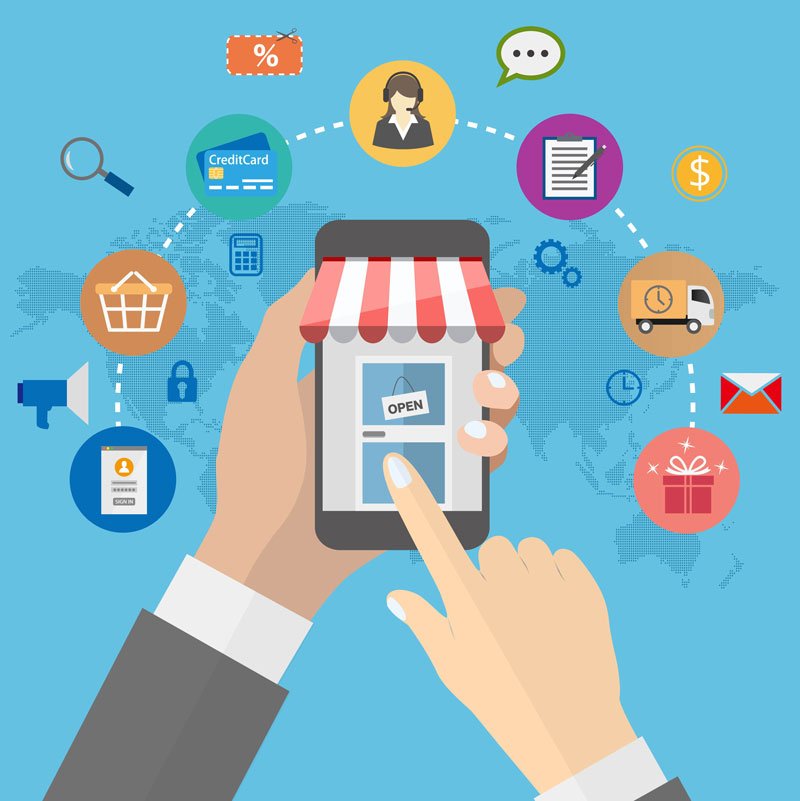Published November 12, 2019
In our last post, we discussed how traditional supply chains need to evolve to incorporate the customer journey, which can be summed up in the three mega-processes of SHOP, BUY and USE. In order to succeed in the world of digital commerce and meet unrelenting customer expectations, brands and retailers must adapt their supply chains and sales strategies to maximize product visibility and provide customers with a personalized, seamless experience whenever, wherever and however they want it.
When executed properly, developing a new end-to-end (E2E) supply chain for digital commerce creates many opportunities for long-term revenue growth, operational savings and service improvements. In addition to employing the right strategies, processes, people and technologies, the following four elements are required to implement a successful E2E supply chain solution:
- Identification. For many companies that have operated and maintained the same traditional supply chains for decades, it can be challenging to recognize the need or appropriate method to shift their focus toward a more customer-centric approach. Instead of viewing the corporate supply chain and customer journey and experience as separate entities, it is important for brands and retailers to identify and understand that these two processes work as one to deliver a true E2E supply chain. As customers’ shopping habits continue to change and grow, they have a large impact on many aspects of the supply chain. In order to deliver an amazing customer experience, brands must deploy a supply chain solution that is capable of adapting and constantly evolving to provide a series of options to address what is happening at that moment.
- Interconnectivity. In addition to recognizing the customer journey and corporate supply chain as one, it is important to understand how these two processes influence each other as well as sub-processes. While traditional supply chains “push” products downstream to retailers or other points of sale based on projected demand, the proliferation of online shopping has prompted many companies to adopt a “pull” strategy, where products enter the supply chain after a customer places an order, resulting in leaner inventories and lower carrying costs. With customers also dictating the timing and location of deliveries, having a sophisticated inventory management and optimization tool, along with a powerful distributed logistics network, is essential to creating a frictionless customer experience.
- Visibility. In order to convert a need or want (SHOP) into a purchase (BUY), brands need to maximize product visibility by expanding their sales strategies to incorporate a wide variety of stages and channels. With store closures in the first half of 2019 already surpassing the number of stores closed in all of 2018, it is more important than ever for brands to expand their product availability beyond traditional sales channels. When developing a strategy, brands must think beyond traditional digital and physical channels and evaluate all options, including mobile, desktop, social media, retail e-commerce, marketplaces, brick-and-mortar and more. In addition to incorporating a wide variety of sales channels, it is also important to capture customers’ attention wherever they happen to be in the shopping journey. Discovery is an important part of the purchase funnel, which is where Google and social media win. Google Shopping Actions and in-app social purchasing options allow customers to make a one-click purchase and can also gather valuable search and social data to improve the customer experience by recommending relevant products based on the customer’s preferences and history.
- Integration. While customer demands and sales channels continue to evolve at a rapid pace, retail technology has not advanced at the same rate. In order to support a comprehensive sales strategy and E2E supply chain, it is important to select a technology stack that is capable of handling the complexities and demands of today’s retail landscape and providing a seamless customer experience across all channels and stages. At Tompkins International, we utilize Etail Solutions, a comprehensive digital platform that connects, integrates and automates a brand’s entire sales and supply ecosystem to enable a true E2E supply chain.
This post is part of our “Sell Anywhere” blog series. Learn more about this concept in the related articles below or visit our newsroom to stay up to date on our latest news.



